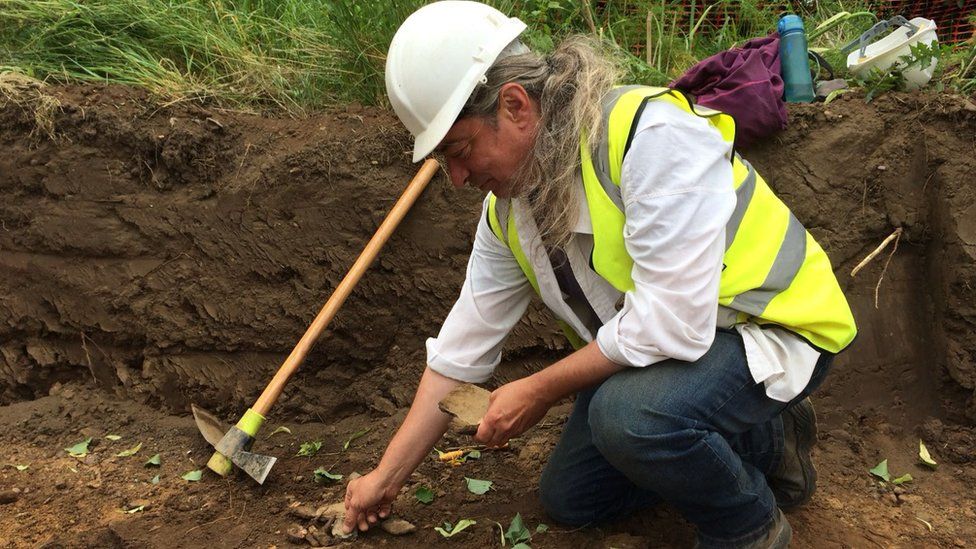Bedfordshire's first Roman town wall unearthed in Sandy
- Published

Archaeologists excavating a former allotment site in a market town have made the "absolutely brilliant" find of a previously-unknown Roman wall.
The dig in Sandy, Bedfordshire, has uncovered about 200 items dating from the Iron Age in 500 BC to the Saxon period in 800 AD.
Among the finds is the remains of a Saxon house.
The site, in Stratford Road, is to be turned into a cemetery, car park and council depot.
Les Capon, project manager for AOC Archaeology, said: "There are no clues of there being a wall - it is a first for almost 2,000 years.
"No-one has seen that, but we have now exposed it on the dig and buried it underground for preservation forever."
Hannah Firth, planning archaeologist for Central Bedfordshire Council, said: "In Bedfordshire it is the only real piece of a Roman town wall and it is absolutely brilliant. I have to say we were not expecting it either, which makes it even more important.
"This is probably one of the most exciting finds for this part of Bedfordshire."
Chris Robson, clerk at Sandy Town Council, said the finds, including pottery, animal bones, Roman rubbish and the skeleton of Roman female, would go to The Higgins Bedford museum but he hoped a travelling display would eventually come to Sandy.
He said he also hoped a plaque or information board could be placed where the wall was discovered "just so people know what is there and what the significance was".
- Published7 February 2018
- Published8 April 2017